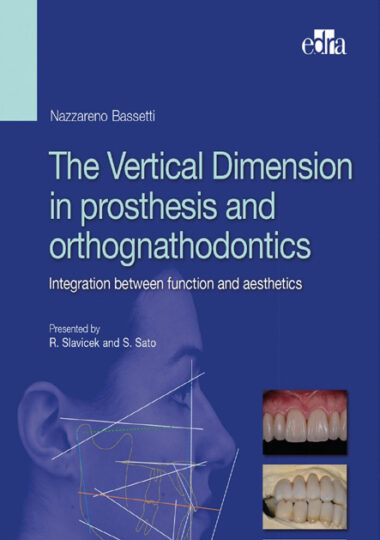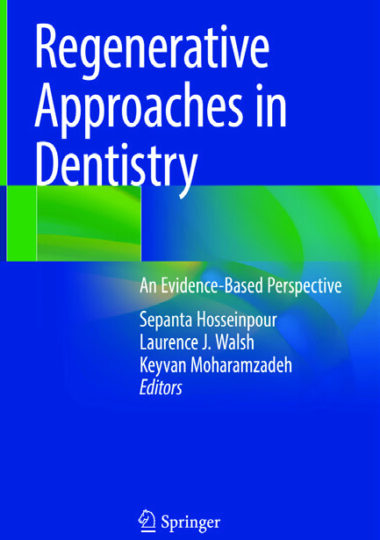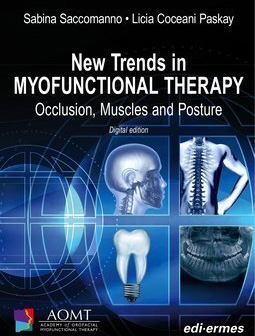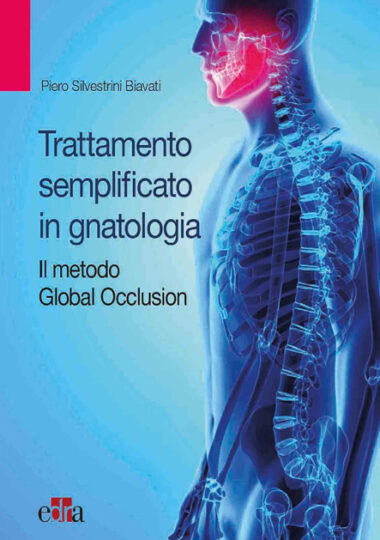STOMATOLOGY EDU JOURNAL 2021 Volume 8 Issue 3
TABLE OF CONTENTS
EDITORIAL
COVID-19 and academic publishing ranking
 Dear Readers,
Dear Readers,
In a section of Foreign Affairs (Volume 100, Number 5, 2021), Dr. Chonira Aturupane of Stanford University points out that during the COVID-19 pandemic a number of challenges stood in the way of effective policymaking: the prevalence of unreliable information; the degree to which uncertainty and unpredictable factors can derail the best-laid plans; the importance of comprehensive and feasible implementation plans. We will concentrate on the first issue, the importance of credible data.
Credible data, reliable information in science does not equal the absence of fake news. Credibility in scientific reporting requires at least the following dimensions to be assessed: method and data transparency; adequate sample size and power; validity of the data; adequate use of secondary data; analytic reproducibility and robustness; effect replicability; independent study sponsoring. Respecting all these requirements should lead to evidence-based data and evidence-based medicine (EBM). (read more)
Constantinus Politis
MD, DDS, MM, MHA, PhD
Professor & Chairperson
Editor-in-Chief
ORIGINAL ARTICLES
- ORTHODONTICS
 DOI: https://doi.org/10.25241/stomaeduj.2021.8(3).art.1
DOI: https://doi.org/10.25241/stomaeduj.2021.8(3).art.1
The failed fusion of the medial nasal and maxillary processes would result in the occurrence of cleft lip while failed fusion of the palatine prominences would lead to the formation of a cleft palate [1,2]. Cleft lip and palate (CLP) has a prevalence of 1 per 500 live births [3]. Surgical management of CLP was first performed approximately 150 years ago [4]. At present, CLP patients often undergo surgery before the 1st year of age. However, an oronasal fistula may develop postoperatively due to the infection of the palate or tension of the flap, and cause problems for the patient [5]. The oronasal fistula is a common complication of surgical management of CLP with a prevalence rate of 9-50%. The rate of recurrence of the fistula after surgery is as high as 35-70% [6,7]. Development of an oronasal fistula indicates failure of the surgical closure of the palate to obstruct the communication between the oral and the nasal cavity.
According to the classification by Pittsburg, seven types of fistula are present [8], which can be symptomatic or asymptomatic. Symptomatic fistula can cause several complications such as leakage of foods and drinks from the oral cavity into the nasal cavity, bad odor, rhinitis, impaired hearing, hypernasality, infection, and speech problems [7,9,10]. (read more)
Citation: Kiaee B, Hafezi L, Karani M, Amiri F, Jamilian A. Maxillary sinus volume in cleft lip and palate patients with and without an oronasal fistula using CBCT. Stoma Edu J. 2021;8(3):157-162.
- OCCLUSION and TMJ
 DOI: https://doi.org/10.25241/stomaeduj.2020.8(3).art.2
DOI: https://doi.org/10.25241/stomaeduj.2020.8(3).art.2
BC visualizes the contacts between teeth that occur during unconscious teeth grinding or clenching during awake and sleep bruxism. The BC is fabricated for the individual patient using the pressure molding technique. Comparing the actual bruxing scheme on the BC with a so-called optimal centric and eccentric occlusal situation is one suggested possibility to analyze the BC. However, understanding the optimal occlusion does not make it easier to work with the suggested classification scheme. In any case, the BC analyses must consider the laterotrusive and the mediotrusive side contacts during bruxing [1].
A paradigm shift in the assessment of sleep bruxism (SB) took place in recent years. SB is no longer understood solely as a harmful movement disorder. (read more)
Citation: Slavicek G, Grimmer D, Novitskaya A, Slavicek F. On the track of bruxism: quantitative, qualitative and intraindividual analyses of the BruxChecker® in daily clinical routine. Stoma Edu J. 2021;8(3):163-171.
REVIEW ARTICLE
- CARIOLOGY
The use of Er:YAG Laser for dental caries removal
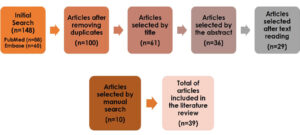 DOI: https://doi.org/10.25241/stomaeduj.2021.8(3).art.3
DOI: https://doi.org/10.25241/stomaeduj.2021.8(3).art.3
Contemporary dentistry is based on early diagnosis, adequacy of the oral environment, and prevention of oral diseases. In recent years, new tools have emerged to optimize/facilitate dental treatment, including laser. Studies carried out over the years have proven the effectiveness of laser therapy for hard and soft tissues manipulation [1-3].
The word LASER comes from the English acronym Light Amplification by Stimulated Emission of Radiation. Its mechanism of action is based on the emission of a collimated light beam of high energy intensity and can be stimulated by solid, liquid, or gaseous active medium. Lasers have different wavelengths, and this implies the variable phenomena that they can present: absorption, penetration, transmission, and diffusion. In dentistry, the most desirable phenomenon is absorption, as it will interact with living tissue, effectively exercising its different functions [4]. (read more)
Citation: Marcelino GDS, Lopes JHR, Faraoni JJ, Dias PC. The use of Er:YAG laser for dental caries removal. Stoma Edu J. 2021;8(3):173-183.
- DENTOALVEOLAR SURGERY
 DOI: https://doi.org/10.25241/stomaeduj.2021.8(3).art.4
DOI: https://doi.org/10.25241/stomaeduj.2021.8(3).art.4
Originally, piezosurgery was developed to allow cutting hard structures without affecting soft structures, with an ultrasound instrumentation. Bone cutting is performed by high frequency micromovements generated by the piezoelectric handpiece, the piezotome. The back and forth motion transmi-
tted to a cutting insert creates a cutting effect. Over the past decades, numerous scientific articles have illustrated the numerous indications of piezocision in oral surgery, implant surgery, cranio-maxillofacial surgery and other surgical disciplines. The main
advantages and characteristics of piezocision are the selective cutting of the bone without damaging adjacent soft tissues such as vessels, nerves, mucous membranes, but also to reach difficult access areas via angled inserts compared to conventional instrumentation, and to cut without generating significant exothermic reaction. The use of angled inserts
improves the visibility of the operating field.
Therefore, piezoelectric surgery is a safe, precise and atraumatic technique. (read more)
Citation: Thonnart F, Gilon Y, Systermans S. Contribution of piezocision in oral surgery: the example of the acceleration of orthodontic movements. Stoma Edu J. 2021;8(3):184-188.
- PROSTHETIC DENTISTRY
 DOI: https://doi.org/10.25241/stomaeduj.2021.8(3).art.5
DOI: https://doi.org/10.25241/stomaeduj.2021.8(3).art.5
The primary purpose of teeth is to prepare food for ingestion. Processing food demands the actions of trituration, manipulation, and deglutition. When teeth are lost, the function is compromised [1]. The replacement of missing teeth is accomplished using dental prostheses. These prostheses may be used to replace all the teeth with complete dental prostheses, or some of the teeth with partial dental prostheses. Replacement teeth may gain support using remaining natural teeth, dental implants, residual alveolar ridges, or a combination of these structures. Studies clearly indicate that removable prostheses are not as effective in restoring function, esthetics, and patient self-esteem. In fact, multiple nutritional deficiencies, associated comorbidities, and loss of self-confidence have been reported with removable prostheses [2-4]. (read more)
Citation: Margvelashvili-Malament M, Malament KA, Eckert SE. Selecting an appropriate occlusal scheme when fabricating implant-supported fixed dental prostheses: a systematic review. Stoma Edu J. 2021;8(3):189-194.
- GERODONTOLOGY
Mechanisms linking oral health and frailty in older adults: a narrative review
 DOI: https://doi.org/10.25241/stomaeduj.2021.8(3).art.6
DOI: https://doi.org/10.25241/stomaeduj.2021.8(3).art.6
One of the dominant characteristics of the older
population is heterogeneity, therefore overall health and function can vary substantially among individuals of the same chronological age. The concept of frailty has come to the forefront of research interest in Geriatric Medicine as a geriatric syndrome charac-terized by multiple functional impairments trying to explain this diversity among older people [1,2,3]. Frailty is defined as a clinical state of increased vulne-rability related to ageing in which multiple systems lose their physiological reserves and the homeostatic balance is disrupted, resulting in an increased risk of adverse health-related outcomes, including functi-onal impairment, dependency, hospital admission, institutionalization, reduced quality of life and morta-lity, even after exposure to a minor stressor, such as a viral infection or the use of a new drug [2,4]. The most common clinical manifestations of frailty are falls, confusion, functional decline and several non-specific signs and symptoms, such as unintentional weight loss, extreme fatigue and frequent infections. Genetic and environmental factors combined with epigenetic mechanisms are closely associated to the cumulative molecular and cellular damage, and pathophysiology of frailty. (read more)
Citation: Konstantopoulou K, Kossioni A. Mechanisms linking oral health and frailty in older adults: a narrative review. Stoma Edu J. 2021;8(3):195-204.
CASE REPORT
- ORAL REHABILITATION
 DOI: https://doi.org/10.25241/stomaeduj.2021.8(3).art.7
DOI: https://doi.org/10.25241/stomaeduj.2021.8(3).art.7
Tumors, trauma or congenital factors mostly lead to an oral-maxillofacial defect. The maxillary defect, especially in the anterior teeth area, has a serious impact on patients from both physiological and psychological aspects, including bite, pronunciation and aesthetic functions [1,2]. Therefore, as a complex functional and aesthetic reconstruction, the multidisciplinary approach is urgently needed to make a comprehensive diagnosis and optimal treatment plan, which may consist in periodontal, prosthodontic, maxillofacial and implant treatment [3].
Conventional rehabilitation workflow for patients with oral cancer completes the following steps in sequence [4]. Surgery is performed to remove the affected area. The bone defect is reconstructed with a bone flap or prosthesis. When feasible, the implant and fixed restoration are used to improve the effect. Obviously, there are disadvantages of the conventional workflow to be optimized. Discontinuous procedures are difficult to ensure the treatment consistency. The diagnosis and treatment standards of different specialties are diversified and rely heavily on their experience. In summary, the complex treatment process reduces the predictability of the rehabilitation [5]. (read more)
Citation: Ge Y, Guo D, Shan X, Zhang L, Lu R, Shaoxia P, Zhou Y. A multidisciplinary approach for the rehabilitation of a patient with chondrosarcoma: prosthetically-driven digital workflow for maxillary reconstruction and implant treatment. Stoma Edu J. 2021;8(3): 207-215
PRODUCT NEWS
The gold standard in Laser Dentistry – SiroLaser Blue
The term LASER is an acronym for “Light Amplification by the Stimulated Emission of Radiation”. Since its in dentistry in 1960 by Miaman and its application to oral hard and soft tissues, notable progress has been made. The laser treatment has proven to be more expensive than traditional treatment, but, as laser reduces bacterial levels and postoperative pain, it is an effective tool for increasing the efficiency, specificity, ease and comfort of dental treatment.
Oral hard and soft tissues have a specific affinity for absorbing laser energy with a certain wavelength. A dental laser wavelength is the decisive factor for the level at which the laser energy is absorbed by the target tissue. The laser selection depends on the target tissue that the practitioner wants to treat.
The energy radiated by the laser is basically a single color light (monochrome) and therefore a single wavelength. Currently, the practitioner has the opportunity to choose from a series of lasers, one of a single color, which he considers most useful for his daily practice.
SiroLaser Blue is the world’s first diode laser that includes a blue diode, an infrared diode and a red diode. All these different shapes make it a versatile tool for laser treatment suitable for different dental applications. (read more)
Florin-Eugen Constantinescu
DOI: https://doi.org/10.25241/stomaeduj.2021.8(3).prodnews.1
BOOKS REVIEW
Regenerative Approaches in Dentistry
An Evidence-Based Perspective
Editors: Sepanta Hosseinpour,
Laurence J. Walsh, Keyvan Moharamzadeh
DOI: https://doi.org/10.25241/stomaeduj.2021.8(3).bookreview.2
New Trends in Myofunctional Therapy
Occlusion, Muscle and Posture
Authors: Sabina Saccomanno,
Licia Coceani Paskay
DOI: https://doi.org/10.25241/stomaeduj.2021.8(3).bookreview.3
Trattamento semplificato in Gnatologia
Il metodo Global Occlusion
Author: Piero Silvestrini Biavati
DOI: https://doi.org/10.25241/stomaeduj.2021.8(3).bookreview.4


